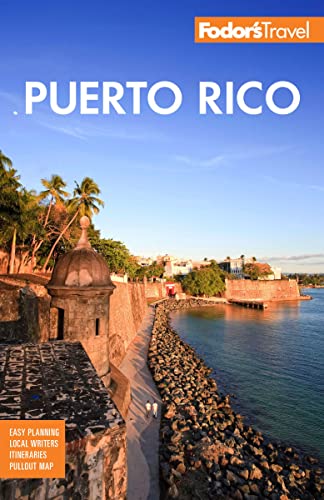History You Can See
Pre-colonial Puerto Rico
The Taínos were the indigenous group that populated the island prior to its "discovery" by Christopher Columbus on his second trip to the New World in 1493. The Taínos' name for the island was Borinquen, and even today, Puerto Ricans honor their Taíno heritage by referring to themselves as boricuas.
What to See: The island's two main ceremonial centers—Tibes and Caguana—have preserved the limited artifacts of Taíno culture that have been discovered over the years. At Tibes, just north of Ponce, visitors can see reproductions of the bohíos in which Taínos lived, as well as fields believed to have served as ritual sites.
Closer to San Juan, those curious to get a window into the Taíno world can visit La Cueva de María de la Cruz, a cave in Loíza where archaeologists discovered Taíno artifacts in the mid-20th century. A guided tour of the cave can be arranged through the local group, Parque Histórico Cueva María de la Cruz.
Colonial Puerto Rico
Columbus arrived in 1493, and the Spanish crown controlled the island—though with a determinedly laissez-faire approach—until the Spanish-American War of 1898 ended with the concession of Puerto Rico to the United States. The first Spanish governor of the island was Juan Ponce de León, the explorer famous for his legendary pursuit of the elusive fountain of youth. Spain's Queen Isabela charged Ponce de León with the task of "compel[ling] and forc[ing] the Indians to work for the Christian inhabitants." According to the late historian and archaeologist Ricardo Alegría, the Taínos were decimated, refusing to resist the Spanish conquistadores because they believed that Spaniards were immortal; thus, taking up arms against them was futile.
By the 1530s, Africans had been brought to the island for slave labor; they built San Juan's two biggest fortresses, Castillo San Felipe del Morro and Castillo San Cristóbal, massive construction projects that took more than 250 years of intense, arduous labor. Slavery in Puerto Rico was finally abolished in 1873.
What to See: Built in 1521, Casa Blanca was the intended home of Juan Ponce de León, who never actually lived here. His descendants, however, called the Old San Juan property home for 250 years.
Castillo San Felipe del Morro and Castillo San Cristóbal aren't San Juan's only forts—there's also Fortín San Gerónimo del Boquerón, just behind the Caribe Hilton, and the Fortín El Cañuelo on Goat Island, visible across San Juan Bay—but they're certainly the largest and most impressive. Both offer commanding views of the Atlantic from their upper levels.
Built between 1533 and 1540, La Fortaleza was intended to serve as a perch from which the Bay of San Juan could be monitored and protected. Its strategic limitations were soon discovered, though, and the UNESCO-recognized structure is home to Puerto Rico's governor, as it has been since the late 16th century. Guided tours allow the public to glimpse how the governor lives.
A predominantly Afro–Puerto Rican town, Loíza was founded in 1719 and was populated by escaped slaves. Separated from the mainland by the Río Grande, the town remained geographically and socially isolated until the mid-1970s, allowing many Afro–Puerto Rican traditions to be preserved. Called the "capital of tradition," Loíza is home to popular bomba and plena music and dance, and is famous for vejigantes (coconut masks), used during annual festivals . Although it's most lively in early July, when the Santiago Apóstol festival is under way, a visit at any other time of year should include a stop at San Patricio, one of the island's oldest churches and home to what may be the only black St. Patrick statue in the world.
The Transition to the Commonwealth
Puerto Rico became a U.S. territory in 1898. Although few would argue that life was better under the Spanish, many have had misgivings about the transfer. As Puerto Rican historians Kal Wagenheim and Olga Jiménez de Wagenheim remarked, "The invasion of Puerto Rico [by the U.S.] ended four centuries of oppressive Spanish colonial rule, only to replace it with a more subtle brand of colonialism."
Although the island was now part of the United States, Puerto Ricans were without formal citizenship for more than a decade. The educational system underwent frequent upheavals during this time, as did the structure of island government, in accordance with U.S.-imposed policies that reflected evolving defense and economic interests. Even when U.S. citizenship was granted with the Jones–Shafroth Act (1917), this development did little to resolve the ambiguous relationship between Puerto Rico and the United States; citizenship for Puerto Ricans was not, after all, conferred with all the rights and privileges enjoyed by state citizens. Puerto Ricans don't, for example, have a voting representative in Congress, nor can they vote for president. The island became a commonwealth (or a "free associated state") in 1952, but this made little difference in the day-to-day lives of the islanders.
Fierce debates continue among Puerto Ricans about the status of the island. Of the three major political parties, one is in favor of statehood, one prefers being a commonwealth, and the third advocates independence.
What to See: Built between 1919 and 1929, Puerto Rico's beaux arts–style Capitolio building is an often-overlooked site that shouldn't be missed. Its rotunda is inlaid with colorful mosaic tiles depicting the major periods of Puerto Rican history, and the Puerto Rican Constitution is displayed in glass cases. Busts of important Puerto Rican politicians are also on display. Visitors will often encounter protesters on the Capitolio steps; citizens gather here frequently in peaceful protest against government policies.
Built in 1911, the neoclassical masterpiece known as the Casa Wiechers-Villaronga today houses the Museo de la Arquitectura Ponceña, where exhibits provide insight into the city's designers and their buildings during this period. Every town has its own culture trolley (often free), offering a historic guided tour of the area's highlights. Stops generally can be found in the town's plaza, in front of the city hall.




